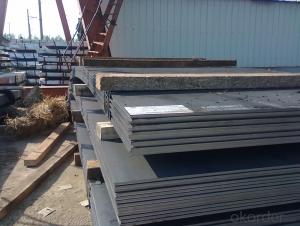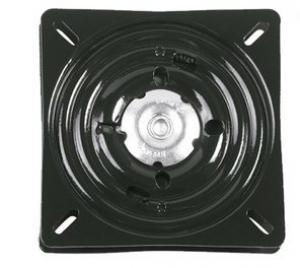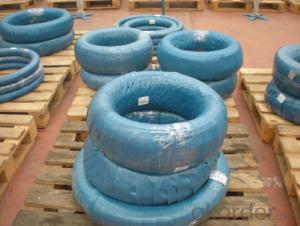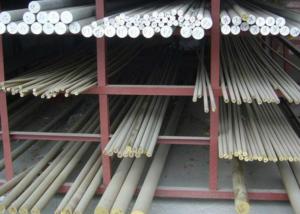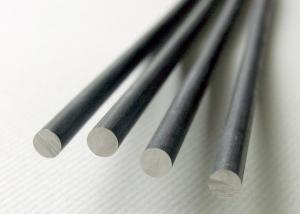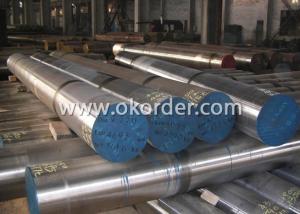Special Steel Cr12MoV Cold Working Die Steel Plate
- Loading Port:
- China main port
- Payment Terms:
- TT OR LC
- Min Order Qty:
- 25 m.t.
- Supply Capability:
- 10000 m.t./month
OKorder Service Pledge
OKorder Financial Service
You Might Also Like
Item specifice
The details of our Steel
1. Produce Standard: as the GB, AISI, ASTM, SAE, EN, BS, DIN, JIS Industry Standard
2. Produce processes: Smelt Iron -EAF smelt Billet - ESR smelt Billet -Hot rolled or forged get the steel round bar and plate
3. Heat treatment:
Normalized / Annealed / Quenched+Tempered
4. Quality assurance:
All order we can received Third party inspection, You can let SGS, BV,.. and others test company test and inspect our products before Goods shipping.
Product information
Chemical Composition(%)
Country | Standard | C | Si | Mn | Cr | Mo | V | S | P | W |
GB | C12MoV | 1.45-1.70 | ≤0.40 | ≤0.40 | 11.00-12.5 | 0.40-0.60 | 0.15-0.30 | ≤0.030 | ≤0.030 | |
DIN | 1.2601 | 1.55-1.75 | 0.25-0.40 | 0.20-0.40 | 11.00-12.0 | 0.50-0.70 | 0.10-0.50 | ≤0.030 | ≤0.030 | 0.40-0.60 |
Available Size
Rolled flat steel | 12-90mm×205-610mm×L |
Forged flat steel | 100-300mm×400-600mm×L |
Heat Treatment
Item | Temperature℃ | Hardness |
Anneal | 850-880 | ≤255HB |
Quenching | No.1:980-1040 | 60-63HRC |
No.2:1050-1130 | 42-50HRC | |
Tempering | No.1:200-300(1) | 57-60HRC |
No.2:200-300(2-3) | 58-62HRC |
Applications: Suitable for various complicated cold working dies with high precision and long lifetime,such as punching dies,cold extrusion dies,thread rolling dies,screw plates,cold extrusion dies,and precise measuring devices
Product show

Workshop show
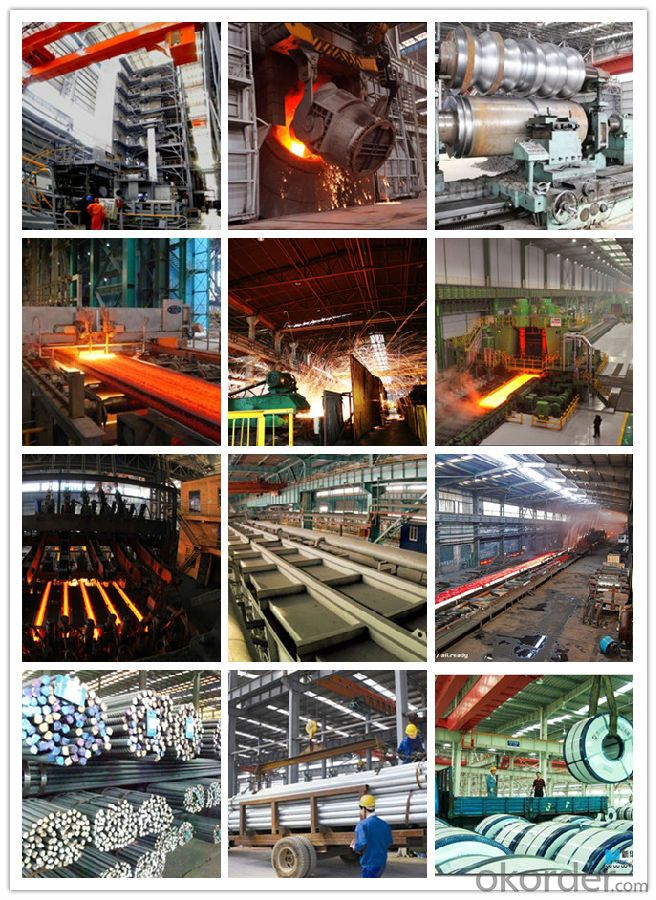
- Q:What are the properties of wear-resistant tool steel?
- Wear-resistant tool steel typically possesses high hardness and excellent toughness, allowing it to withstand abrasion, impact, and deformation. It also has good heat resistance, retaining its strength and hardness at elevated temperatures. Additionally, wear-resistant tool steel exhibits good dimensional stability and corrosion resistance, making it a durable and long-lasting material for cutting, forming, and shaping tools.
- Q:How does the availability of raw materials affect the production of special steel?
- The availability of raw materials significantly impacts the production of special steel. Raw materials, such as iron ore, coal, and various alloys, are crucial components in the steel manufacturing process. A limited supply or increased cost of these materials can hinder production and result in higher production costs. Additionally, the quality and consistency of raw materials influence the final product's properties and performance. Therefore, the availability of raw materials directly affects the overall production capacity, cost-effectiveness, and quality of special steel.
- Q:How does hot rolling affect the microstructure of special steel?
- Hot rolling is a metalworking process that involves heating the steel above its recrystallization temperature and then passing it through a series of rollers to reduce its thickness. This process has a significant impact on the microstructure of special steel. During hot rolling, the high temperature causes the grains in the steel to recrystallize, removing any existing defects and creating a more uniform and refined grain structure. This recrystallization process results in smaller and more equiaxed grains, which enhances the mechanical properties of the steel. Additionally, hot rolling promotes the formation of certain microstructural features such as dislocation cells and subgrains. These features help to increase the strength and toughness of the steel, making it suitable for various applications that require high performance and durability. Moreover, hot rolling can also lead to the precipitation of certain alloying elements within the steel. These precipitates can play a crucial role in enhancing specific properties of the steel, such as corrosion resistance or high-temperature strength. Overall, hot rolling has a profound influence on the microstructure of special steel. It refines the grain structure, promotes the formation of beneficial microstructural features, and facilitates the precipitation of alloying elements. These microstructural changes contribute to the improved mechanical properties and performance of the steel, making it a preferred choice in industries such as automotive, aerospace, and construction.
- Q:What are the properties of high-strength stainless steel?
- High-strength stainless steel possesses excellent corrosion resistance, high tensile strength, and durability. It is resistant to high temperatures, making it suitable for use in extreme environments. Additionally, it offers good formability and weldability, allowing for various fabrication processes.
- Q:Can special steel be used for making marine components?
- Yes, special steel can be used for making marine components. Special steel, also known as marine grade steel, is specifically designed to withstand the harsh conditions of marine environments. These environments are exposed to corrosion, high humidity, and saltwater, which can cause regular steel to deteriorate quickly. Marine grade steel is typically made with added alloys, such as nickel, chromium, and molybdenum, which provide excellent corrosion resistance and durability. These alloys help the steel resist the corrosive effects of saltwater and prevent rusting. Additionally, special steel is often coated with protective coatings or treated to further enhance its resistance to corrosion. Marine components made from special steel include ship hulls, propellers, shafts, valves, pipelines, and various structural elements. The use of special steel ensures the longevity and reliability of these components in demanding marine conditions. Furthermore, the strength and toughness of special steel make it suitable for withstanding the high mechanical stresses and impacts experienced at sea. In summary, special steel is an ideal material for making marine components due to its superior corrosion resistance, durability, and strength. It helps to ensure the longevity and reliability of marine structures and equipment in harsh marine environments.
- Q:What are the properties of high-temperature stainless steel?
- High-temperature stainless steel possesses excellent corrosion resistance, heat resistance, and oxidation resistance, making it suitable for use in extreme environments with elevated temperatures. It maintains its strength and mechanical properties even at high temperatures, making it ideal for applications such as furnace components, steam generators, and exhaust systems.
- Q:What are the different heat treatment processes used in special steel production?
- Some of the different heat treatment processes used in special steel production include annealing, tempering, quenching, normalizing, and hardening.
- Q:How does special steel contribute to the aerospace fastener industry?
- Special steel contributes to the aerospace fastener industry by offering enhanced strength, durability, and resistance to extreme temperatures and corrosion. These properties make it a crucial material for manufacturing aerospace fasteners, which are essential for holding aircraft structures together. The high-performance nature of special steel ensures the reliability and safety of fasteners, ultimately contributing to the overall efficiency and success of the aerospace industry.
- Q:How does special steel contribute to the electrical conductivity of products?
- Special steel contributes to the electrical conductivity of products by offering high levels of purity and low levels of impurities. Its composition and manufacturing process ensure that it has excellent conductivity and minimal resistance, allowing for efficient flow of electric current.
- Q:What are the specific requirements for special steel used in the marine propeller industry?
- To ensure optimal performance and durability in harsh marine environments, the marine propeller industry requires special steel that meets specific requirements. These requirements include the following: 1. Corrosion Resistance: Special steel must resist corrosion caused by constant exposure to saltwater. This prevents rust formation and maintains the propeller's integrity over time. 2. Strength and Toughness: The steel must possess high strength and toughness to withstand mechanical stresses and impacts, especially in rough sea conditions, without deforming or failing. 3. Fatigue Resistance: The steel should have excellent fatigue resistance to endure millions of load cycles without developing cracks or fractures. 4. Weldability: The steel must be easily weldable to ensure strong and reliable joints when manufacturing segmented propellers. 5. Heat Resistance: The steel needs to withstand significant heat generated by friction and propulsion forces to prevent deformation or loss of mechanical properties at high temperatures. 6. Machinability: Special steel should be easily machinable to allow for precise shaping and finishing of complex propeller blade designs. 7. Non-Magnetic Properties: To minimize interference with magnetic navigation systems and sensors used in modern ships, the steel should have low magnetic permeability. By meeting these specific requirements, the special steel used in the marine propeller industry can withstand seawater's challenging conditions, provide efficient propulsion, and maintain its structural integrity throughout the propeller's lifespan.
1. Manufacturer Overview |
|
|---|---|
| Location | |
| Year Established | |
| Annual Output Value | |
| Main Markets | |
| Company Certifications | |
2. Manufacturer Certificates |
|
|---|---|
| a) Certification Name | |
| Range | |
| Reference | |
| Validity Period | |
3. Manufacturer Capability |
|
|---|---|
| a)Trade Capacity | |
| Nearest Port | |
| Export Percentage | |
| No.of Employees in Trade Department | |
| Language Spoken: | |
| b)Factory Information | |
| Factory Size: | |
| No. of Production Lines | |
| Contract Manufacturing | |
| Product Price Range | |
Send your message to us
Special Steel Cr12MoV Cold Working Die Steel Plate
- Loading Port:
- China main port
- Payment Terms:
- TT OR LC
- Min Order Qty:
- 25 m.t.
- Supply Capability:
- 10000 m.t./month
OKorder Service Pledge
OKorder Financial Service
Similar products
New products
Hot products
Related keywords
